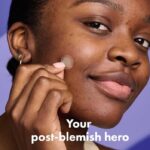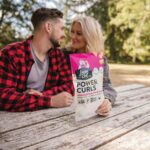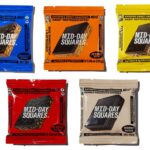Creating a sharp positioning statement for a brand reminds me of the story of the proverbial woodsmen who proclaims if he had an hour to cut down a tree, he would spend 50 minutes sharpening his blade, and 10 minutes cutting down the tree.
First of all, a sharp positioning statement with just the right words is a vital strategic exercise needed before you begin planning tactics.
It is an internal-facing document and usually looks like this:
For (target customer) who (statement of the need or opportunity), the (product name) is a (product category) that (statement of key benefit)
There are four essential requirements of a positioning statement
- The category we operate in
- Target audience we serve
- The benefit to the customer
- The reason why the brand delivers on the promise
A brand manager will use it to guide the creative exploration of the brand for a range of marketing needs.
Examples
For the young and young-at-heart, Walt Disney World is the theme park that best delivers on an immersive and magical experience because Walt Disney World, and only Walt Disney World, connects you to the characters and worlds you most desire.
For people who live alone, McCarthy’s Singles Store is the only grocery change that specializes in serving smaller sized households, with smaller sized products to reduce cost and eliminate waste.
Unlike other beverage options, Coca-Cola products inspire happiness and make a positive difference in customers’ lives, and the brand is intensely focused on the needs of consumers and customers
For savvy teenage shoppers, Amy’s Fashions is the only brand of young adult clothes designed for teens by teens, with distinctive design and fashion to personalize your wardrobe.
Positioning Requires Focus
Last week I worked with three marketing professionals at one of my clients on a positioning statement for one of their brands.
We chewed over each word carefully crafting the perfect positioning statement to get at the essence of the brand. They understood that we can’t be for everybody.
The team had to make tough choices of who the brand serves and how they offer them something special that others can’t give them.
Positioning work often begins through a brand archetype exercise to identify exactly who the brand represents to the collective unconscious. Read this post about brand archetypes to learn more.
Results of Solid Brand Positioning
Similarly, close your eyes and think about walking into a Starbucks versus Dunkin’ (formerly Dunkin’ Donuts). You get different images of the experience. One is earthy tones, soft cushiony chairs, and light jazz playing in the background. The other is pink and orange with bright colors and the smell of sweetness lingering in the air. Before the stores were built, they not only had a construction blueprint they followed a rigid set of standards for the brand experience.
As a result, whatever you sell – a product or a service, it needs to begin with a positioning statement before you start thinking about tactical marketing activities from websites to packaging to communications. Often, positioning can grow stale and needs a cleaner edge. Refreshing a brand’s positioning statement is like sharpening your blade.
Finally, is your brand’s positioning as sharp as a razor? Don’t start working on tactics with a dull blade.
Need help with a cutting edge positioning statement?
I can help. You can set up a time to chat with me about your marketing challenges using my calendar. Our initial conversation is free. You talk, I listen. Email me jeffslater@themarketingsage.com or call me. 919 720 0995. Visit my website at www.themarketingsage.com Let’s explore working together today.

Photo by Jason Abdilla on Unsplash




